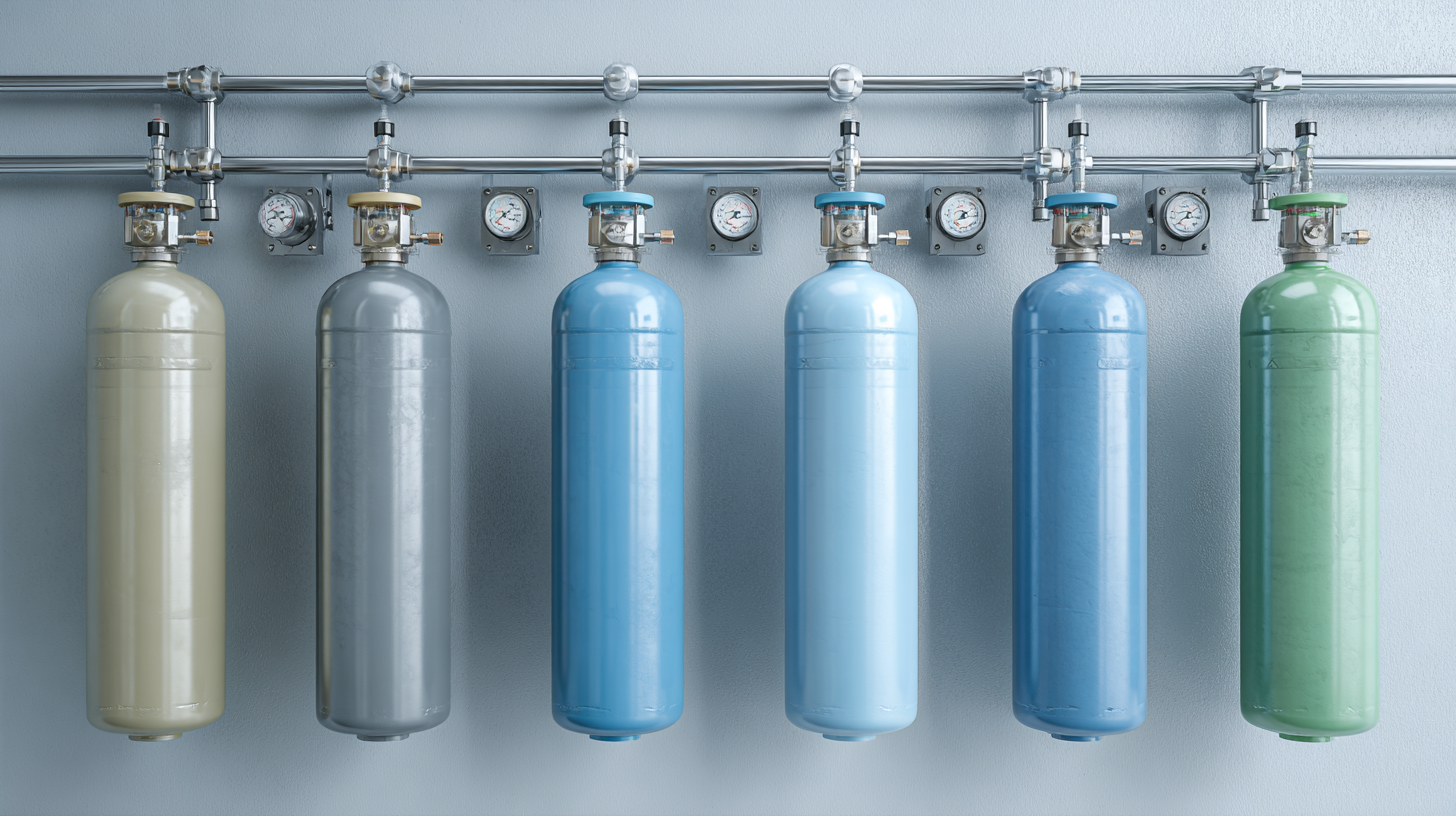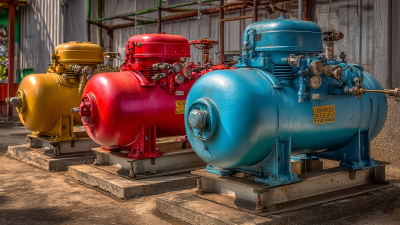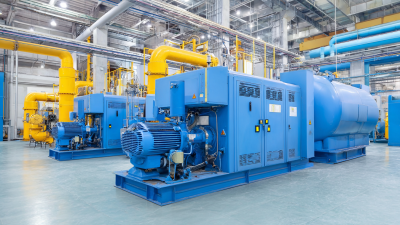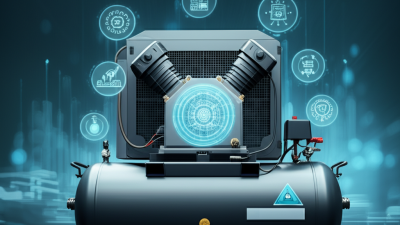1-800-868-2450
My Account | Cart | Checkout
Top 5 Compressed Air Solutions to Boost Your Business Efficiency
In today's competitive landscape, businesses continuously seek innovative methods to enhance operational efficiency. One significant area that often goes overlooked is the effective use of compressed air solutions. As industry expert Dr. Emily Hartman notes, "Utilizing the right compressed air solutions can significantly reduce costs and improve productivity across various sectors." This insight highlights the importance of integrating advanced compressed air technologies into everyday processes, ultimately leading to more streamlined operations.

Compressed air systems serve as the backbone for numerous industrial applications, from powering pneumatic tools to providing essential automation support. By leveraging the top five compressed air solutions tailored to specific business needs, companies can not only optimize their production capabilities but also promote a more sustainable environment. Additionally, understanding how to implement these solutions effectively could lead to substantial energy savings and reduced downtime.
As we explore these top solutions, businesses will discover the transformative potential of compressed air technology. By implementing these strategies, organizations can position themselves for success in an increasingly demanding market, harnessing the power of compressed air solutions to drive innovation and improve overall efficiency.
Innovative Compressed Air Technologies for Enhanced Performance
Innovative compressed air technologies play a crucial role in enhancing business performance across various industries. One significant advancement is the development of variable speed drive (VSD) compressors. These systems adjust their motor speed based on air demand, resulting in substantial energy savings and reduced operating costs. By optimizing airflow, VSD compressors not only minimize energy waste but also extend the lifespan of equipment, leading to increased reliability and lower maintenance expenses.
Moreover, implementing smart monitoring systems has transformed how businesses manage their compressed air usage. These technologies utilize IoT sensors to provide real-time data on pressure levels, energy consumption, and overall system performance. By leveraging this information, companies can identify inefficiencies, promptly address leaks, and implement preventive maintenance, ultimately maximizing productivity. Enhanced automation in compressed air systems also allows for seamless integration with existing production lines, ensuring that operations run smoothly and efficiently.
Cost-Effective Air Compressor Systems to Maximize Profitability
When it comes to enhancing business efficiency, investing in cost-effective air compressor systems plays a pivotal role. These systems not only provide reliable power for various pneumatic tools and applications but also minimize operational costs. By optimizing the design and energy consumption of air compressors, businesses can significantly reduce their electricity bills while ensuring that productivity remains high.
Moreover, modern air compressor solutions incorporate advanced technologies that maximize uptime and improve performance. Features such as variable speed drives and smart control systems enable businesses to adapt to fluctuating demand seamlessly, reducing waste and enhancing profitability. By choosing the right air compressor system, companies can experience a substantial return on investment, making it a wise choice for those aiming to streamline operations and maximize profitability.
Sustainable Practices in Compressed Air Usage for Eco-Friendly Operations
Compressed air systems are essential for various industrial applications, but their energy consumption can account for nearly 30% of a facility's total energy use. Adopting sustainable practices can significantly reduce this impact, leading to eco-friendly operations. According to the Department of Energy, almost 90% of compressed air systems are inefficient, wasting energy due to leaks and over-pressurization. Businesses can increase their efficiency by conducting regular audits, which often reveal that up to 30% of air usage can be saved through simple maintenance and equipment upgrades.
**Tip:** Implement a routine maintenance schedule to identify and repair leaks promptly. Small leaks can lead to substantial energy losses over time, affecting not just costs but also system reliability.
Additionally, using variable speed drives (VSD) on compressors allows for dynamic adjustments to output, matching air supply with actual demand. Reports indicate that VSDs can reduce energy consumption by up to 50%. This change not only conserves energy but also prolongs the life of the equipment, further contributing to sustainability efforts.
**Tip:** Monitor your system’s performance consistently with advanced analytics tools, which can help identify anomalies and optimize compressor operation for greater energy efficiency and reduced environmental impact.

Streamlining Maintenance for Improved Compressed Air Reliability
 Maintaining reliable compressed air systems is crucial for any business aiming to enhance operational efficiency. Streamlining maintenance processes not only ensures consistent performance but also extends the lifespan of air compression equipment. Regular inspection and monitoring play a pivotal role in preemptively identifying potential issues before they escalate into costly breakdowns. By implementing a structured maintenance schedule, businesses can minimize downtime and maintain production flow.
Maintaining reliable compressed air systems is crucial for any business aiming to enhance operational efficiency. Streamlining maintenance processes not only ensures consistent performance but also extends the lifespan of air compression equipment. Regular inspection and monitoring play a pivotal role in preemptively identifying potential issues before they escalate into costly breakdowns. By implementing a structured maintenance schedule, businesses can minimize downtime and maintain production flow.
Furthermore, investing in advanced monitoring technologies can significantly improve the reliability of compressed air systems. By utilizing sensors and IoT devices, companies can gather real-time data on system performance, detect anomalies, and respond swiftly to any irregularities. This proactive approach to maintenance not only boosts efficiency but also helps in optimizing energy consumption, leading to significant cost savings in the long run. Through these strategies, businesses can ensure their compressed air systems operate at peak performance, driving overall productivity and profitability.
Integrating Smart Sensors for Optimal Compressed Air Management
Integrating smart sensors into compressed air management systems can substantially enhance operational efficiency in various industries. These advanced sensors provide real-time data on pressure, temperature, and flow rates, allowing businesses to monitor their air systems continuously. By utilizing these insights, companies can identify leaks or inefficiencies promptly, thus minimizing wasted energy and reducing operational costs. The ability to make data-driven decisions helps maintain optimal performance levels of compressors and associated equipment.
Moreover, the integration of smart sensors facilitates predictive maintenance strategies. By analyzing historical data gathered from sensors, businesses can predict when maintenance is needed, preventing unexpected downtimes and extending the life of their equipment. This proactive approach leads to greater reliability in production processes and supports better planning and resource allocation. Ultimately, integrating smart sensors not only improves compressed air management but also becomes a key factor in boosting overall business efficiency and productivity.
Top 5 Compressed Air Solutions to Boost Your Business Efficiency - Integrating Smart Sensors for Optimal Compressed Air Management
| Solution | Description | Key Features | Expected Efficiency Gains |
|---|---|---|---|
| Smart Compressed Air Monitoring | Real-time monitoring of compressed air systems. | Data analytics, alarms for leaks, and performance tracking. | 10-20% reduction in energy costs. |
| Automated Leak Detection | Continuous monitoring for air leaks. | Ultrasonic sensors, mobile apps for alerts. | Up to 30% improvement in air usage efficiency. |
| Smart Demand Control | Adjusts compressed air output based on real-time demand. | Integration with existing machinery, cloud-based analytics. | 15-25% reduction in system downtime. |
| Air Quality Management Systems | Ensures optimal air quality in operations. | Filters, sensors, and monitoring interfaces. | Enhances product quality, reducing waste by 20%. |
| Predictive Maintenance Solutions | Predictive analytics for maintenance scheduling. | Machine learning algorithms, maintenance alerts. | 10-25% reduction in maintenance costs. |
Related Posts
-

The Ultimate Guide to Choosing the Right Compressed Air Dryer for Your Industrial Needs
-

Top 10 Industrial Air Solutions to Optimize Your Facility's Efficiency
-

Unlocking the Power of High Pressure Air Compressors for Home and Industry
-

Maximizing Efficiency: How Industrial Air Compressors Transform Manufacturing Processes
-
Maximize Efficiency: The Surge in Industrial Air Compressor Rental Demand for Sustainable Practices in Manufacturing
-

The Future of Industrial Air Compressor Technology Innovations to Watch
Copyright © 2025
I&M Industrials Inc.
10 Akron Drive
Greenville SC 29605
Phone: 864-277-2450
GSA Number – GS07F0379Y
